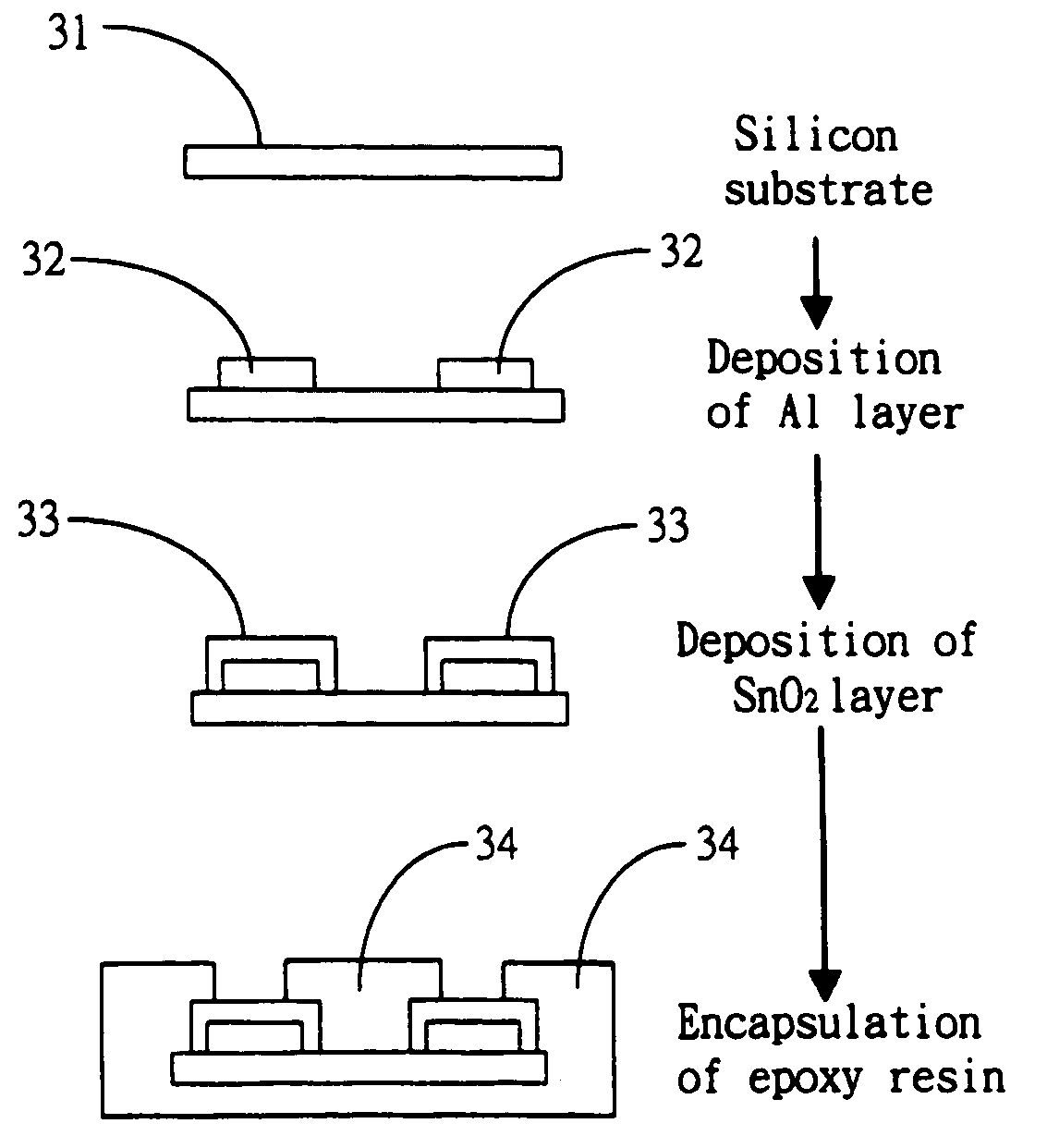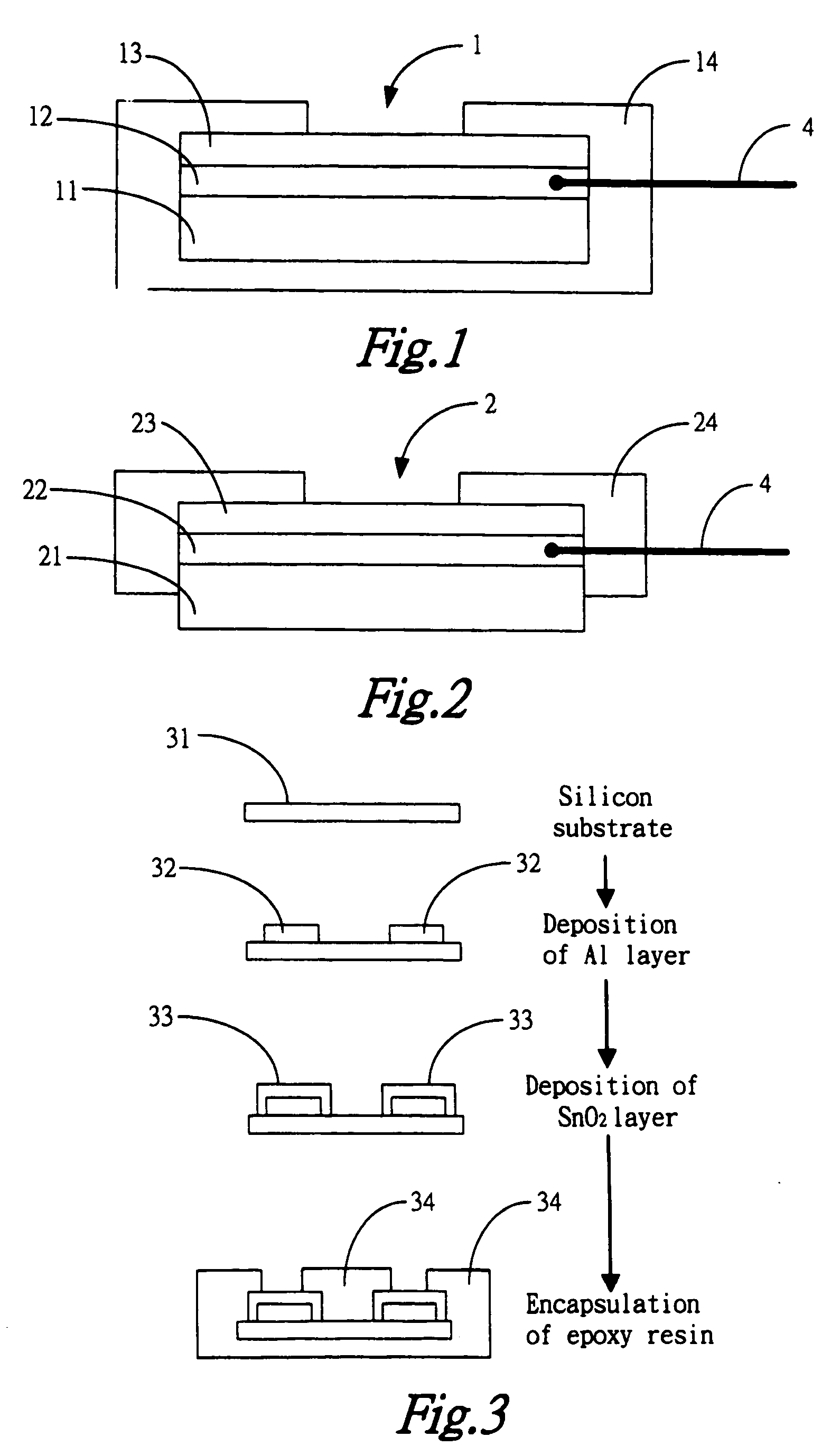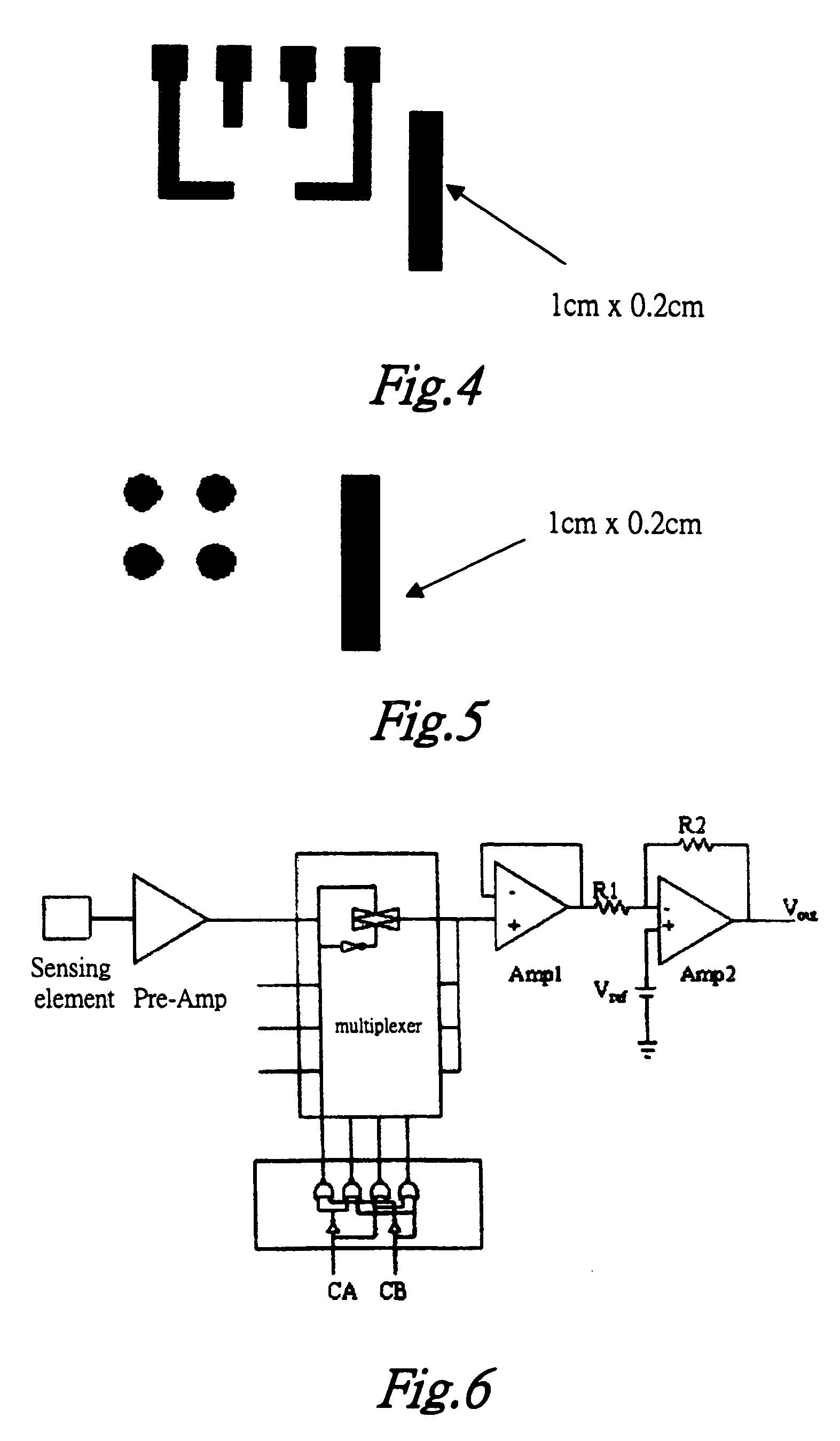Fabrication of array pH sensitive EGFET and its readout circuit
- Summary
- Abstract
- Description
- Claims
- Application Information
AI Technical Summary
Benefits of technology
Problems solved by technology
Method used
Image
Examples
Embodiment Construction
[0050] The method for fabricating an array pH sensor and its readout circuit of the present invention are implemented by depositing a non-conductive pH sensing film onto a non-insulated substrate, thereby fabricating a separate array pH sensor and detecting the pH value of the solution by using such array pH sensor. In addition, the readout circuit of this array pH sensor, which includes pre-readout circuit, a multiplexer, a rear end buffer circuit and an amplifier circuit, is fabricated according to the typical processes for making semiconductors. The array pH sensor and the readout circuit can be combined to be a hybrid array pH sensor. The array sensor is advantageous over the single sensing element, because larger sampling signals can decrease error resulting from the sensing element and accuracy thereof is increased. When it is commercialized, the sensor would have high stability and accuracy.
[0051] The metal oxide thin-films were prepared by the radio frequency sputtering sys...
PUM
 Login to View More
Login to View More Abstract
Description
Claims
Application Information
 Login to View More
Login to View More - R&D
- Intellectual Property
- Life Sciences
- Materials
- Tech Scout
- Unparalleled Data Quality
- Higher Quality Content
- 60% Fewer Hallucinations
Browse by: Latest US Patents, China's latest patents, Technical Efficacy Thesaurus, Application Domain, Technology Topic, Popular Technical Reports.
© 2025 PatSnap. All rights reserved.Legal|Privacy policy|Modern Slavery Act Transparency Statement|Sitemap|About US| Contact US: help@patsnap.com



